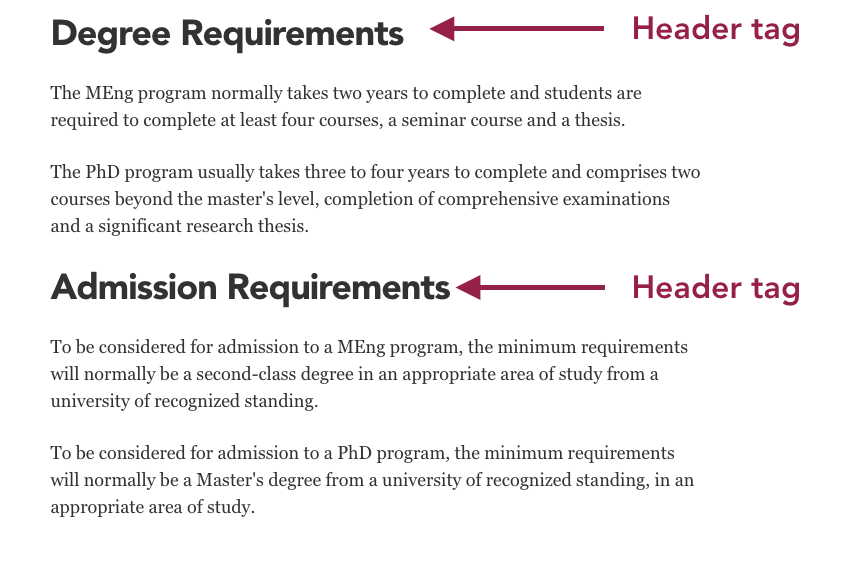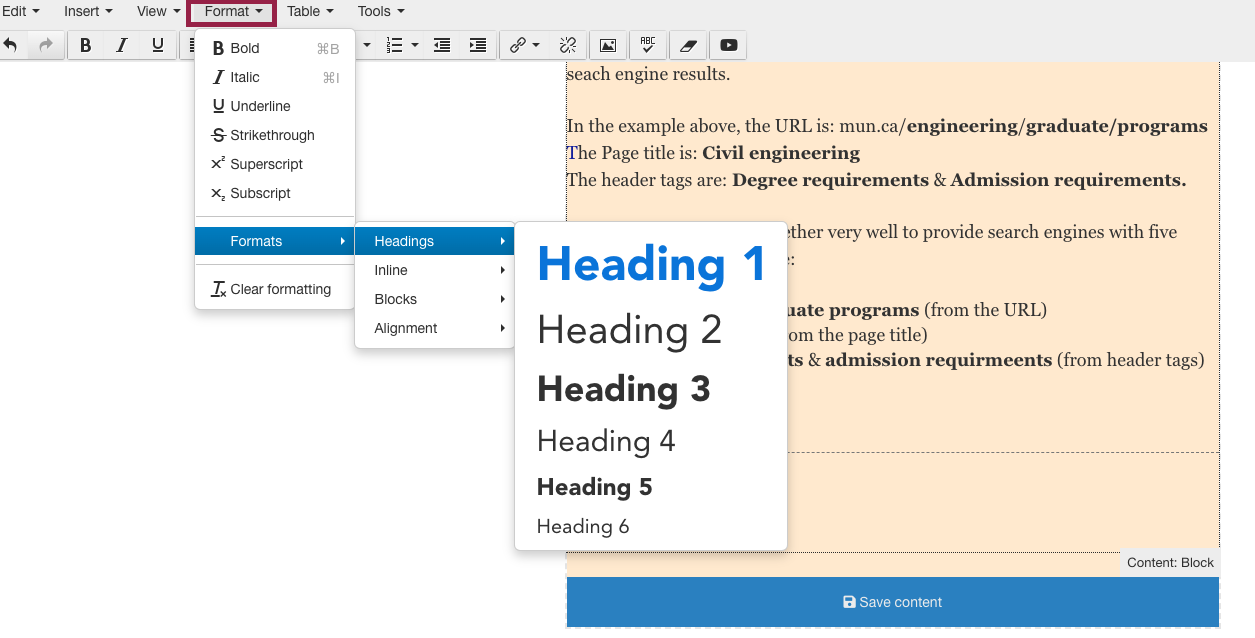Improve SEO with header (H1-H6) tags
When search engines crawl your website, they take note of your header tags (H1-H6). Therefore, the text in your header tags is another way to tell search engines what kind of information people will find on your page. Example:

While your headers should be written in a clear and natural manner so site visitors can quickly find the information they're after, where possible, they should also contain keywords for your page. Ideally, keywords you haven't used in your URL or page title.
The header tag "Admission requirements" is useful for someone reading your website, but it is also a great keyword that will improve the page's ranking in search engine results.
In the example above, the URL is: mun.ca/engineering/graduate/programs
The Page title is: Civil engineering
The header tags are: Degree requirements & Admission requirements.
These 3 SEO slots work together very well to provide search engines with many great keywords for this page:
- Engineering & graduate programs (from the URL)
- Civil engineering (from the page title)
- Degree requirements & admission requirements (from header tags)
How to add a header to your page
To add a header to your page, highlight a line of text using your mouse, and then click "format" in your page editor.
Scroll down to formats, select headers, and then choose the size of your header (H1-H6).
